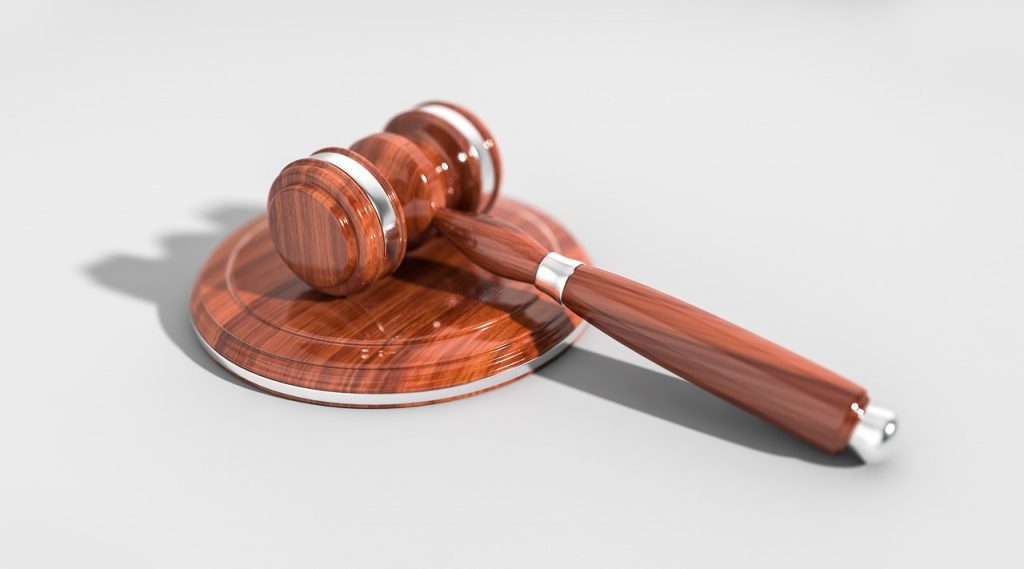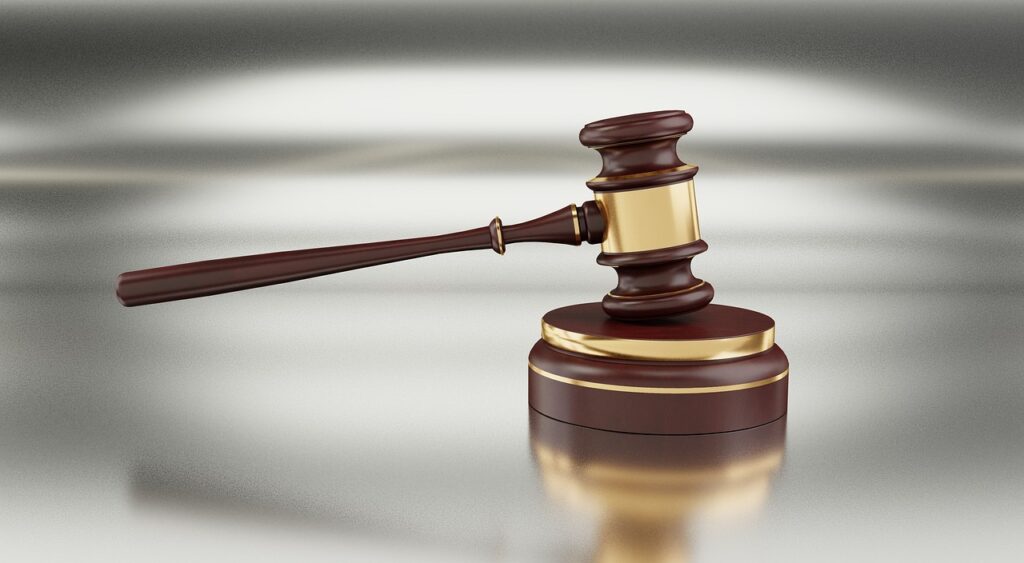Published on 15th June 2025
Authored By: Drishti Singh
Shri Chintamani Smarak Vidhi Mahavidyalaya Pratapgarh, Uttar Pradesh
-
Case Name: Justice K.S. Puttaswamy (Retd.) & Anr. vs. Union of India & Ors.
-
Citation: (2017) 10 SCC 1
-
Date of Judgment: August 24, 2017
-
Bench: A nine-judge bench of the Hon’ble Supreme Court of India
-
Key Issue: The case addressed the constitutional validity of the Aadhaar scheme and whether the right to privacy was a fundamental right.
-
Outcome: The Supreme Court unanimously held that the right to privacy is a fundamental right, protected under Article 21 (right to life and personal liberty) and Part III of the Indian Constitution.
Introduction
The landmark case of Justice K.S. Puttaswamy (Retd.) v. Union of India & Ors. (2017) was described as highly significant in Indian constitutional law. The Supreme Court had ruled that the right to privacy was a fundamental right under the Indian Constitution. It was stated that the case emerged from a challenge to the Aadhaar scheme, which sought to implement a unique identification system for Indian residents. The petitioners had argued that the Aadhaar project violated the right to privacy, while the government had defended it as an efficient governance tool.
It was observed that a nine-judge bench of the Supreme Court had unanimously concluded that the right to privacy was an intrinsic part of the fundamental rights guaranteed under Part III of the Constitution. The decision had overturned earlier rulings and established privacy as a constitutionally protected right.
Background of the Case
It had been noted that the origins of the Justice K.S. Puttaswamy (Retd.) v. Union of India & Ors. case lay in the increasing use of biometric identification under the Aadhaar scheme. It was stated that Justice K.S. Puttaswamy, a retired judge of the Karnataka High Court, had filed a writ petition in 2012 before the Hon’ble Supreme Court, arguing that the mandatory collection of biometric and personal data under the Aadhaar project infringed upon the right to privacy.
It had been asserted that the Aadhaar system, introduced by the Unique Identification Authority of India (UIDAI), sought to provide a unique identity number to every resident of India based on their biometric and demographic information. The government had reportedly justified Aadhaar as a means to streamline welfare benefits, reduce corruption and improve governance. However, concerns had been raised about potential privacy violations, mass surveillance and misuse of personal data.
The petitioners had contended that the collection and storage of biometric data posed a serious threat to individual privacy and that there was no legal framework in place to regulate data protection. It had been claimed that the right to privacy was implicit under Article 21 (Right to Life and Personal Liberty) of the Constitution and thus, any infringement required strict constitutional scrutiny.
On the other hand, the government had maintained that privacy was not explicitly recognized as a fundamental right and that the Aadhaar scheme was a necessary tool for efficient governance. Given the conflicting legal opinions and past judgments, the Hon’ble Supreme Court had referred the matter to a nine-judge bench to determine whether privacy was a constitutionally protected right.
It was observed that this referral had set the stage for a historic ruling that would reshape India’s constitutional landscape and redefine the relationship between the state and individual rights.
Issues before the Court
The Hon’ble Supreme Court had reportedly examined the following issues:
- Whether the Indian Constitution recognized the right to privacy as a fundamental right.
- If it did, under which provisions of the Constitution it was protected.
- Whether the government could impose reasonable restrictions on this right.
- What implications recognizing privacy as a fundamental right would have on existing laws and government policies.
Judicial Precedents Considered
It had been pointed out that, before this case, the Hon’ble Supreme Court had ruled in earlier judgments that privacy was not a fundamental right. The government had relied on these rulings:
- P. Sharma v. Satish Chandra (1954) – where an eight-judge bench had held that privacy was not a fundamental right under Article 21.
- Kharak Singh v. State of Uttar Pradesh (1962) – where a six-judge bench had also denied the existence of privacy as a fundamental right.
It had been observed that courts had gradually acknowledged the significance of privacy in various rulings, though this recognition had led to conflicting interpretations. Some judgments had reportedly upheld privacy as a fundamental right, while others had seemingly restricted its scope in favor of state interests. This lack of consistency had created legal uncertainty regarding the extent of privacy protections under the Indian Constitution. To address this ambiguity, the Hon’ble Supreme Court had reportedly taken up the Puttaswamy case, intending to establish a clear legal framework for the right to privacy in India.
Judgment and Key Findings
The nine-judge bench had unanimously declared that privacy was a fundamental right under the Indian Constitution. The key observations in the judgment were:
- Privacy as an Inherent Right: The Court had ruled that privacy was an intrinsic part of the right to life and personal liberty under Article 21. It had further clarified that privacy extended to other fundamental rights, such as Article 14 (Right to Equality) and Article 19 (Freedom of Speech & Expression).
- Overruling of Previous Judgments: It was noted that the Court had explicitly overruled the M.P. Sharma (1954) and Kharak Singh (1962) judgments, stating that privacy had always been a fundamental right, even though it had not been explicitly mentioned in the Constitution.
- Definition and Scope of Privacy: The ruling had broadly defined privacy, including personal autonomy, bodily integrity, informational privacy, and decisional privacy. It was asserted that privacy was not limited to physical spaces but extended to personal choices and digital data.
- Reasonable Restrictions: The Court had acknowledged that privacy was not an absolute right and could be restricted under reasonable conditions, such as:
- Legitimate State Interest: Any restriction had to serve a compelling state interest (e.g., national security, public order).
- Proportionality Test: The restriction had to be necessary and proportionate to achieve its objective.
- Due Process: Any action affecting privacy had to follow fair legal procedures.
- Implications for Aadhaar and Other Laws: It was observed that, while the Court had recognized privacy as a fundamental right, it had left the specific challenge to Aadhaar to be decided by a separate five-judge bench, which later upheld Aadhaar with certain restrictions.
Significance of the Judgment
The Puttaswamy judgment had been seen as a landmark decision with far-reaching implications in multiple areas, including:
- Impact on Aadhaar and Digital Privacy: The ruling had raised concerns about data protection and surveillance. It had led to stricter regulations on the collection and storage of personal data.
- Strengthening Individual Freedoms: It had been asserted that the judgment reaffirmed personal autonomy in areas such as reproductive rights, sexual orientation and decision-making. It had contributed to later landmark cases like:
Navtej Singh Johar v. Union of India (2018) – Decriminalizing homosexuality.
- Joseph Shine v. Union of India (2018) – Striking down adultery laws.
- Guidance for Future Laws and Policies: The ruling had reportedly influenced data protection laws and digital governance. It had also contributed to the drafting of the Personal Data Protection Bill, aimed at regulating personal data handling.
- Protection Against State Overreach: The decision had reportedly set a higher standard for government surveillance and ensured that law enforcement and national security laws did not violate citizens’ privacy rights.
Criticism and Challenges
The Justice K.S. Puttaswamy v. Union of India judgment, while being considered a landmark ruling in recognizing the right to privacy as a fundamental right, had not been free from criticism and challenges. Legal scholars and policy analysts had reportedly pointed out several ambiguities and practical concerns that had arisen from the verdict.
One of the primary criticisms had been the lack of clarity regarding the scope of privacy rights, as the judgment had acknowledged privacy as a broad and multifaceted concept. It had been argued that the ruling had not established a clear framework for distinguishing between permissible and impermissible restrictions on privacy. This ambiguity had allegedly left future legal interpretations open-ended, raising concerns about how courts would apply privacy protections in different cases.
Another major challenge had reportedly stemmed from the Aadhaar program itself, which had continued to be a subject of debate even after the ruling. While the Supreme Court had upheld the constitutional validity of Aadhaar, it had also imposed restrictions on its usage. However, critics had pointed out that private entities had continued to demand Aadhaar authentication, leading to concerns over data security and potential breaches of personal information.
Additionally, the judgment had not explicitly addressed issues related to state surveillance. While it had affirmed that mass surveillance violated privacy rights, it had not set concrete limitations on governmental data collection and intelligence-gathering mechanisms. This had led to concerns that future policies might still enable excessive state monitoring, especially given the increasing use of artificial intelligence and digital tracking technologies.
Furthermore, the absence of a comprehensive data protection law had reportedly remained a significant challenge in enforcing privacy rights in India. Although the ruling had emphasized the need for a strong data protection framework, it had taken years before legislative efforts had moved forward. Critics had noted that delays in enacting the Personal Data Protection Bill had weakened the practical impact of the ruling, making individuals vulnerable to corporate and governmental misuse of personal data.
Conclusion
It had been concluded that the Justice K.S. Puttaswamy case was a landmark judgment that had firmly established privacy as a fundamental right in India. By overruling previous decisions and expanding the scope of individual rights, the Hon’ble Supreme Court had significantly advanced constitutional governance.
While the ruling had strengthened civil liberties and digital rights, it had also highlighted the challenges of regulating privacy in an era of mass surveillance and digital technology. The decision had continued to shape legal debates on data protection, state surveillance and personal freedoms in India.
It had been observed that, as India progressed in the digital age, the legacy of the Puttaswamy judgment would remain instrumental in ensuring privacy was protected and not compromised in the name of governance or security. The ruling had served as a reminder that constitutional rights evolved with societal changes and that courts played a crucial role in defending fundamental freedoms against state overreach.
References
- Justice K.S. Puttaswamy (Retd.) & Anr. v. Union of India & Ors., (2017) 10 S.C.C. 1 (India).
- INDIA CONST. art. 21.
- Indian Penal Code, 1860, No. 45, Acts of Parliament, 1860 (India).
- Aadhaar (Targeted Delivery of Financial and Other Subsidies, Benefits and Services) Act, No. 18, Acts of Parliament, 2016 (India).
- Supreme Court of India, Judgment Text, Indian Kanoon, https://indiankanoon.org/doc/127517806/.
- The Personal Data Protection Bill, 2019, Bill No. 373, Lok Sabha, 2019 (India).
- D.Y. Chandrachud et al., Right to Privacy: A Constitutional Perspective, (2017).
- Law Comm’n of India, Report on Privacy and Data Protection (2017).
- Anup Surendranath, The Right to Privacy and the Indian Supreme Court: A Landmark Judgment, 5(2) INDIAN L. REV. 123 (2018).
- Supreme Court Judgment Analysis, Bar & Bench, https://www.barandbench.com/news/ks-puttaswamy-right-to-privacy.
- The Hindu, Editorial: The Privacy Verdict: A Milestone for Civil Liberties, THE HINDU (Aug. 26, 2017), https://www.thehindu.com.
- Rishika Taneja & Sidhant Kumar, Privacy Law: Principles, Injunctions, and Compensation, 12(3) NLU DELHI L. REV. 245 (2018).




